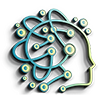
Natural Language Processing (NLP) is a crucial branch of artificial intelligence (AI) that focuses on the interaction between computers and human languages. It enables machines to understand, interpret, and generate human language in a valuable and meaningful way. NLP has significantly advanced in recent years, revolutionizing various fields such as customer service, healthcare, education, and many others.
The key components of NLP include:
- Tokenization: Breaking down text into smaller units, such as words or sentences, known as tokens.
- Morphological analysis: Studying the structure of words and how they are formed from prefixes, roots, and suffixes to understand their meaning.
- Syntactic analysis: Examining the structure of sentences to understand the grammar and arrangement of words for proper interpretation.
- Semantic analysis: Understanding the meaning of words and how they are combined to convey broader ideas and concepts.
- Discourse analysis: Analyzing how sentences and phrases are connected in a larger context to comprehend the overall meaning.
- Pragmatic analysis: Interpreting language in context to understand the intention behind the words, including implications and inferences.
The applications of NLP are diverse and constantly expanding. Some of the common applications include:
- Chatbots and virtual assistants: NLP enables these applications to understand and respond to human queries and commands, providing effective customer service and support.
- Sentiment analysis: NLP can analyze and interpret the sentiments expressed in text, helping businesses understand customer feedback and opinions.
- Machine translation: NLP powers machine translation services, facilitating the translation of text from one language to another.
- Information extraction: NLP can extract relevant information from large volumes of unstructured data, helping businesses make informed decisions.
- Text summarization: NLP can generate concise summaries of lengthy texts, making it easier for users to comprehend and digest large amounts of information quickly.
- Speech recognition: NLP plays a crucial role in converting spoken language into text, enabling applications such as voice-controlled devices and speech-to-text software.
With the development of advanced deep learning models, such as transformer models like BERT (Bidirectional Encoder Representations from Transformers) and GPT (Generative Pre-trained Transformer), the capabilities of NLP have seen significant improvements in recent years. These models have enhanced the understanding of context and semantics, leading to more accurate and sophisticated language processing.
As NLP continues to evolve, it is expected to play an increasingly integral role in various aspects of our daily lives, transforming the way we communicate, work, and interact with technology.
